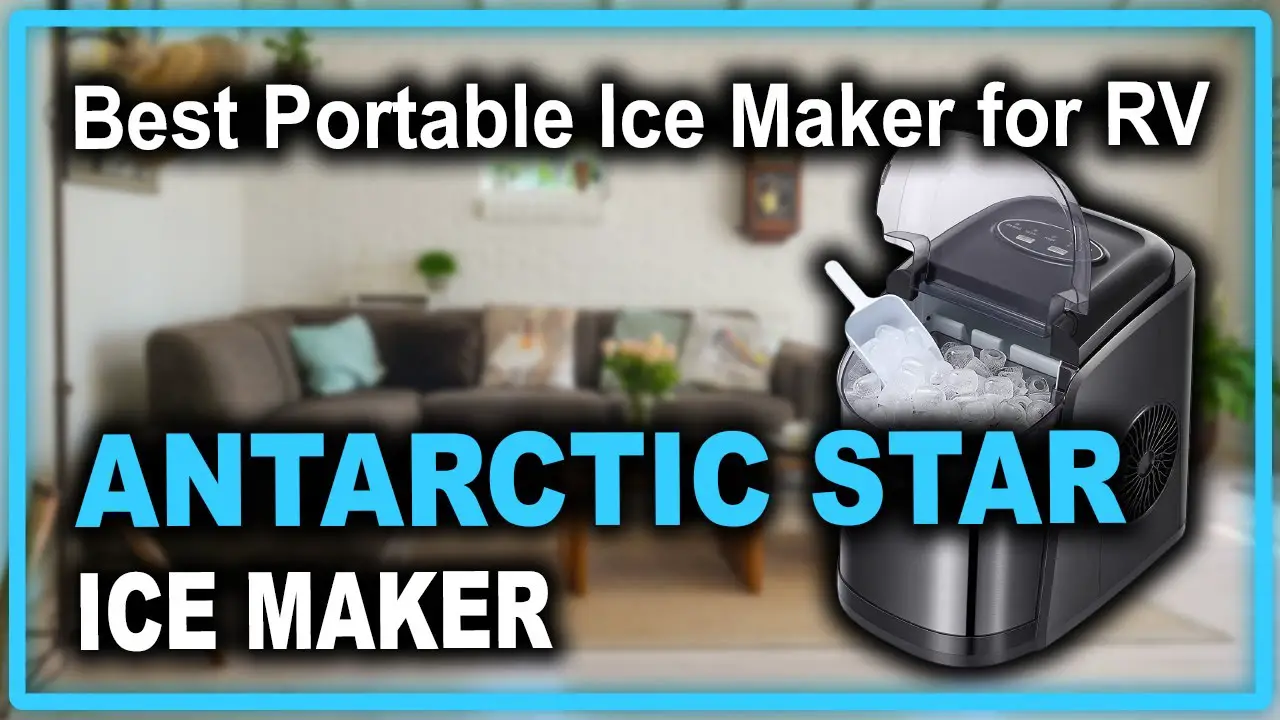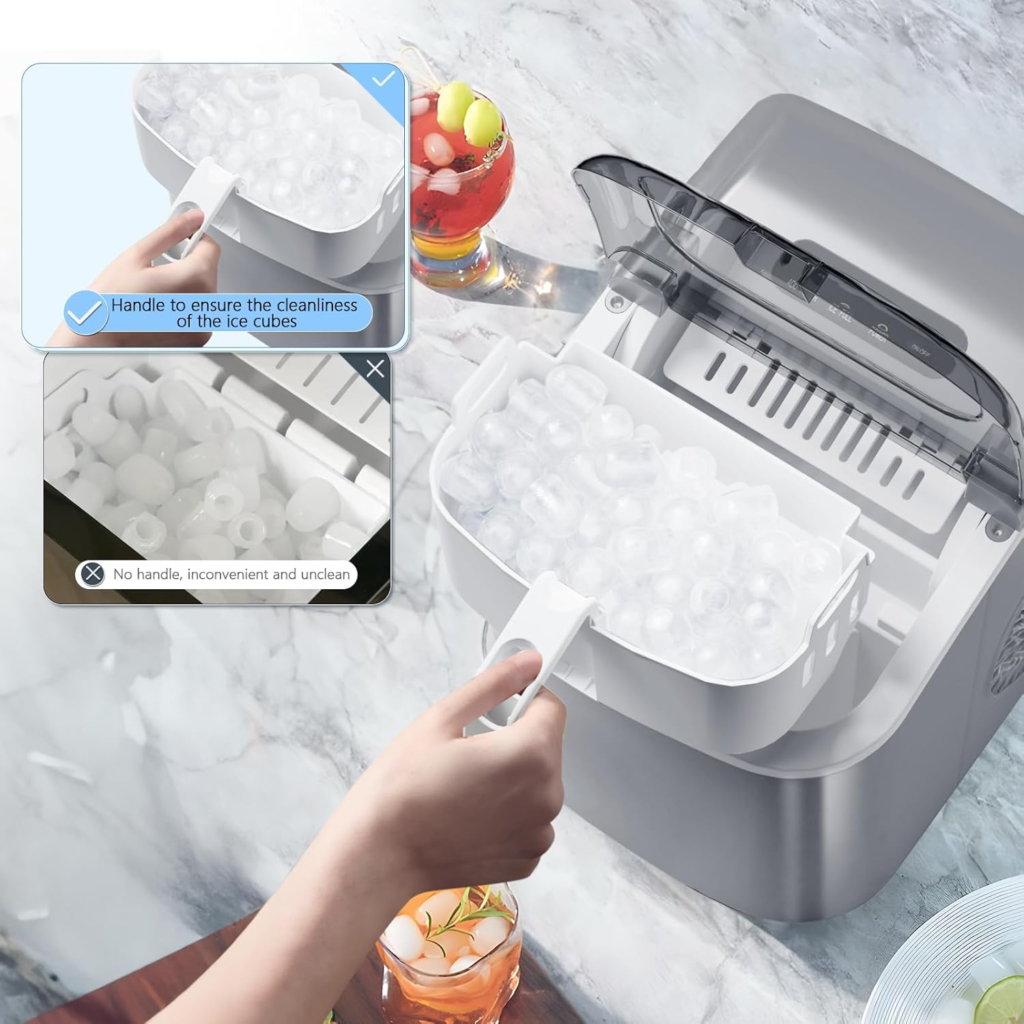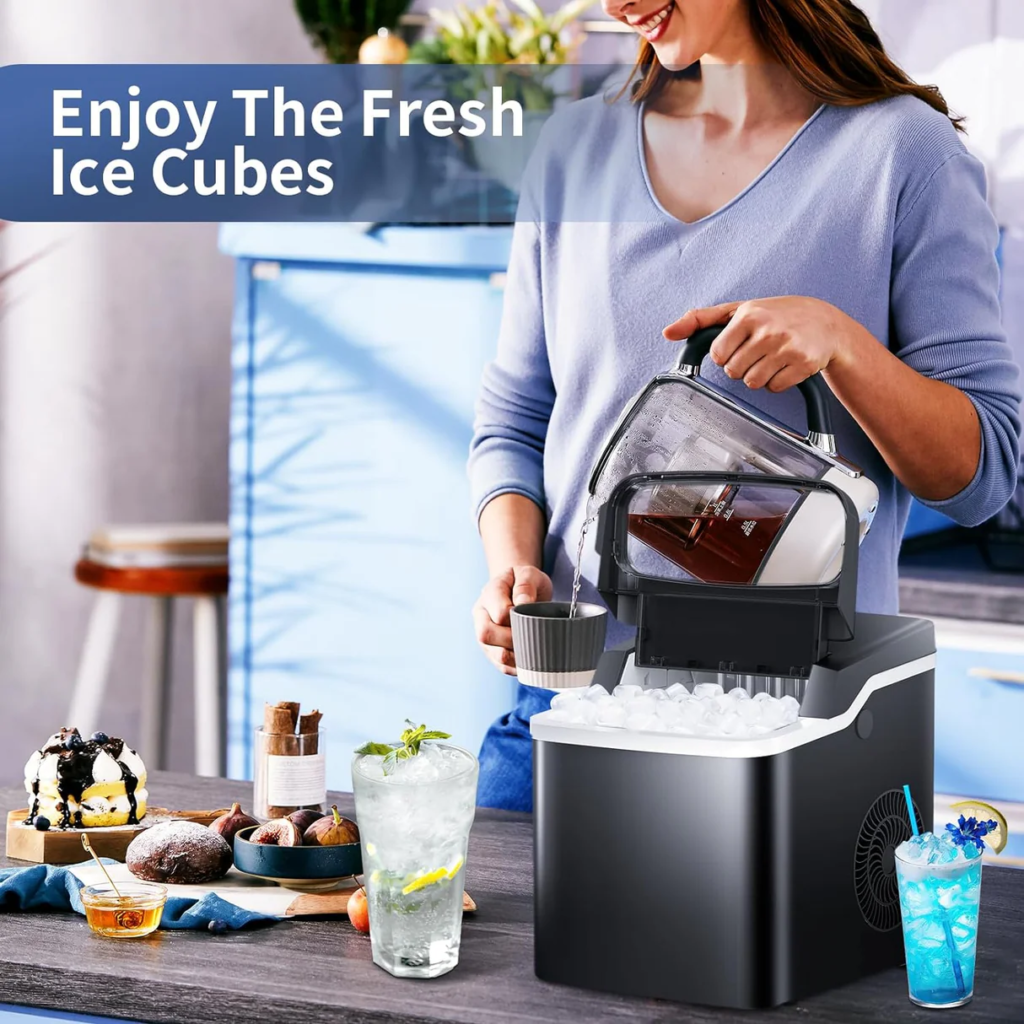
Antarctic star ice maker troubleshooting
Table of Contents
Introduction
The Antarctic Star ice maker is a cutting-edge appliance designed to generate a substantial amount of clear, restaurant-quality ice quickly. Capable of producing up to 26 pounds of ice within a 24-hour period, this device is ideal for both home and commercial settings. However, like any advanced appliance, it can occasionally face issues that require troubleshooting. This guide aims to provide detailed instructions to help you maintain and resolve common issues with your Antarctic Star ice maker, ensuring its optimal performance for years to come.
Common Issues and Solutions
Ice Maker Not Dropping Ice
When your ice maker stops dropping ice, it can be due to several reasons. Here’s how to sort this out.
Inspect Chute
One of the simplest issues could be a blocked chute. Sometimes, ice builds up in the chute and prevents new ice from dropping. Check the chute for any blockages and clear them out with a plastic utensil to avoid damage to the components.
Example: If you notice ice chunks obstructing the chute, gently remove them using a plastic spatula or a similar tool.
Power Status
Powering the unit might seem obvious, but it’s essential to ensure that your ice maker is indeed turned on. Double-check the power switch or button to confirm it’s in the “on” position. Also, make sure the power cord is securely plugged into a functional outlet.
Example: Check if the display panel lights up when the unit is turned on. If not, inspect the power cord for any signs of damage and ensure it’s properly plugged into an operational outlet by testing with another device.
Thermostat Inspection
It’s important to make sure the thermostat is set correctly. An incorrect setting can prevent ice production. Refer to your user manual for the ideal temperature setting for your model.
Example: If your ice maker isn’t producing ice, check the internal temperature setting. It should generally be set around 0°F (-18°C) for optimal ice production.

Ice Maker Not Producing Ice
If your Antarctic Star ice maker isn’t producing ice at all, there are a few potential culprits to investigate.
Water Supply Line
A common issue is a problem with the water supply line. Ensure it is clear and securely connected. A blocked or disconnected water supply line can completely halt ice production.
Example: Inspect the water line connected to the back of the ice maker. If it’s kinked or blocked by debris, straighten it out and clean any obstruction.
Water Valve
The water valve needs to function correctly for the ice maker to receive water. If it’s faulty, the valve may need to be checked and possibly replaced following the manufacturer’s guidelines.
Example: Listen for a clicking sound when the ice maker tries to fill the tray with water. If you don’t hear it, the valve might be faulty and need replacement.
Power Supply
Sometimes, the appliance isn’t receiving adequate power. Check the power cord for any visible damage and ensure all electrical connections are secure. Ensure that the ice maker is properly plugged in, and that the outlet is functioning.
Example: Use a multimeter to check the voltage at the wall outlet. It should typically read around 120 volts for proper operation.
Resetting the Ice Maker
Often, a simple reset can solve the issue. Turn the ice maker off, wait a few minutes, and then turn it back on. This can help recalibrate the system and resolve minor glitches.
Example: If your ice maker has a reset button, press and hold it for a few seconds to reset the system. Refer to the user manual for specific instructions on resetting your model.
Excessive Noise
If your Antarctic Star ice maker is making excessive noise, it usually indicates mechanical issues.
Airflow
Ensure that there’s adequate space around the unit for ventilation. Obstructions to airflow can cause the compressor to work harder, generating more noise. Make sure there’s at least 3 inches of clearance around the ice maker.
Example: Position the ice maker at least 3 inches away from walls or other appliances. Clear away any objects that might be blocking the ventilation grilles.
Internal Components
Loose or damaged parts can cause noise. Inspect the internal components, and if you find any loose screws or parts, tighten them. If any parts appear damaged, they might need to be replaced.
Example: If you hear rattling noises, check inside the cabinet for any loose screws or components. Tighten or replace them as necessary to stop the noise.

Unpleasant Odors
Unpleasant odors from the ice maker can be unpleasant and can even indicate mold or bacteria growth. Here’s how to address it:
Cleaning the Interior
Use a solution of bleach and water to clean the inside of the unit thoroughly. This will help eliminate any bacteria or mold that might be causing the smell.
Example: Mix one tablespoon of bleach with a gallon of water. Using a clean cloth, wipe down all interior surfaces, then rinse with clear water and dry thoroughly.
Replacing the Filter
Change the water filter regularly as recommended by the manufacturer to prevent bacteria growth. A dirty filter can not only cause odors but also affect the taste of the ice.
Example: If your ice starts to taste funny or the production slows down, it’s time to replace the filter. Follow the manufacturer’s instructions for filter replacement.
Water Supply
Ensure that the water supply to the ice maker is clean and free from debris. Using filtered water can help maintain a clean system and produce better-tasting ice.
Example: Install a high-quality water filter on your main water line to ensure only clean, filtered water enters your ice maker.
Frost Build-Up
Frost build-up can significantly affect the performance of your ice maker. Here’s how to prevent and address it:
Air Circulation
Ensure there’s proper air circulation around your ice maker by maintaining at least 3 inches of clearance on all sides. Proper airflow helps prevent frost accumulation.
Example: Regularly check that vents and grilles are not blocked by dust or nearby objects.
Condenser Coils
Dust and debris on the condenser coils can impede airflow and lead to frost build-up. Clean the coils using compressed air or a vacuum to keep them free from dust and debris.
Example: Use a vacuum with a brush attachment to clean the coils behind the unit every few months to maintain optimal airflow.
Descaling the Unit
Mineral buildup inside the ice maker can also lead to frost issues. Regularly descale the unit using a descaling solution as per the manufacturer’s instructions.
Example: Use a commercially available descaling solution, following the instructions on the label for usage frequency and method.
Seals and Drains
Inspect the door seals and drains for any signs of damage or blockage. Broken seals or clogged drains can contribute to frost build-up. Replace or repair these components as necessary.
Example: Run a thin wire through the drainage tube to remove any blockages, and check the door seals for gaps or damage that allow warm air inside.

Cleaning and Maintenance
Regular maintenance is crucial for the efficient operation of your Antarctic Star ice maker.
Interior Cleaning
Maintaining a clean interior ensures the production of high-quality ice and prevents bacterial growth.
Monthly Cleaning Routine
Wipe down the interior with warm water and a mild detergent every month. This prevents any bacterial build-up and ensures that the ice produced is clean and safe for consumption.
Example: Create a solution of warm water and mild dish soap. Using a clean cloth, wipe all interior surfaces, then rinse with water and dry thoroughly.
Changing the Water Filter
Change the water filter every six months or as per the manufacturer’s guidelines. This helps maintain optimal water flow and ice quality.
Example: Mark your calendar to remind you to replace the filter every six months. Follow the manufacturer’s steps for removing the old filter and installing the new one.
Advanced Troubleshooting Solutions
For those who have attempted the basic solutions and still face issues, this section provides advanced troubleshooting techniques that may require more technical know-how or professional intervention.
Electrical Issues and Diagnosis
Electrical problems can cause your Antarctic Star ice maker to malfunction. Here’s how to diagnose and address these issues:
Verifying Power Supply
Ensure the ice maker is plugged into a working electrical outlet. Use a multimeter to check if the outlet is providing power.
Example: If the multimeter reads no voltage, there might be an issue with your home’s electrical system rather than the ice maker itself.
Inspecting Wiring
Inspect the power cord and internal wiring for any visible damage. Damaged wiring can prevent the ice maker from functioning properly.
Example: Look for frayed wires or burnt marks on the cords. If found, replace the damaged wires or seek professional repair.

FactoryPure
Mechanical Problems
Mechanical issues can also hinder the performance of your ice maker. Here’s how to diagnose and address common mechanical problems:
Ice Tray Inspection
If the ice tray is damaged or not positioned correctly, it can affect ice production. Ensure it’s in place and not obstructed.
Example: Remove the ice tray and check for any cracks or obstructions. If found, replace the tray to restore proper ice production.
Ice Ejector Arm
The ejector arm can sometimes become stuck or disconnected, preventing ice from being dispensed properly. Inspect and adjust it as necessary.
Example: Manually move the ejector arm to ensure it’s not sticking. If it doesn’t move smoothly, clean and lubricate it or replace it if damaged.
Emergency Repairs
Unexpected problems can arise despite best efforts. Here’s how to handle emergency repairs:
Finding a Trusted Technician
Build a relationship with a trusted repair service. Ensure they are certified to work on Antarctic Star appliances.
Example: Research and select a local repair service with positive reviews and certifications. Keep their contact information handy for emergencies.
Understanding Warranty Terms
Familiarize yourself with the warranty terms for your ice maker. Knowing what’s covered can save significant costs when repairs are needed.
Example: Review your warranty documentation and note any coverage for parts and labor. This ensures you know what’s covered during a repair visit.
Conclusion
The Antarctic Star ice maker, with its advanced features and robust performance, is a valuable addition to any home or office. Ensuring its longevity and optimal functionality requires regular maintenance, timely troubleshooting, and professional care when necessary. By adhering to the comprehensive guidelines provided in this article, users can address common issues effectively and maintain the high performance of their Antarctic Star ice maker. In scenarios that demand technical expertise, don’t hesitate to contact a professional to ensure that the appliance continues to serve efficiently and safely.
READ ALSO: Euhomy Ice Maker Troubleshooting | Fix Euhomy Ice Maker Not Making Ice
FAQs
Why is my Antarctic Star ice maker not dropping ice?
This can occur due to a blocked chute. Clear any obstructions and ensure the control arm is in the correct position.
What do I do if my Antarctic Star ice maker isn’t producing enough ice?
Check if the water supply line is connected properly and ensure the water filter isn’t clogged. Sometimes, simply resetting the ice maker can help.
How can I fix a leaking Antarctic Star ice maker?
Ensure all water connections are tight and check the water hose for any damage. A loose connection is often the cause of leaks.
Why does my ice taste funny from my Antarctic Star Ice Maker?
Replace the water filter and clean the interior of the ice maker thoroughly. Using filtered water also helps improve the taste of the ice.
